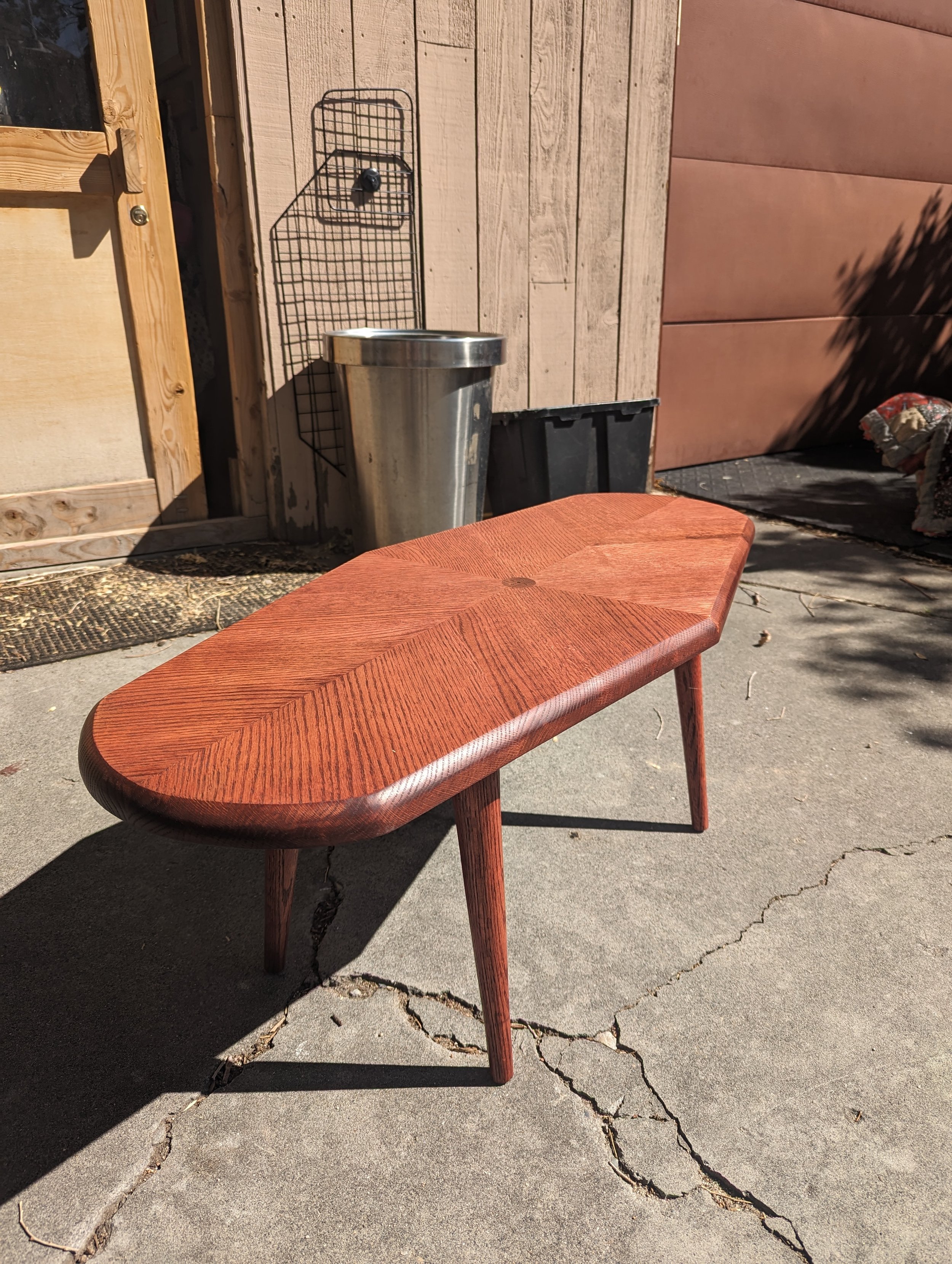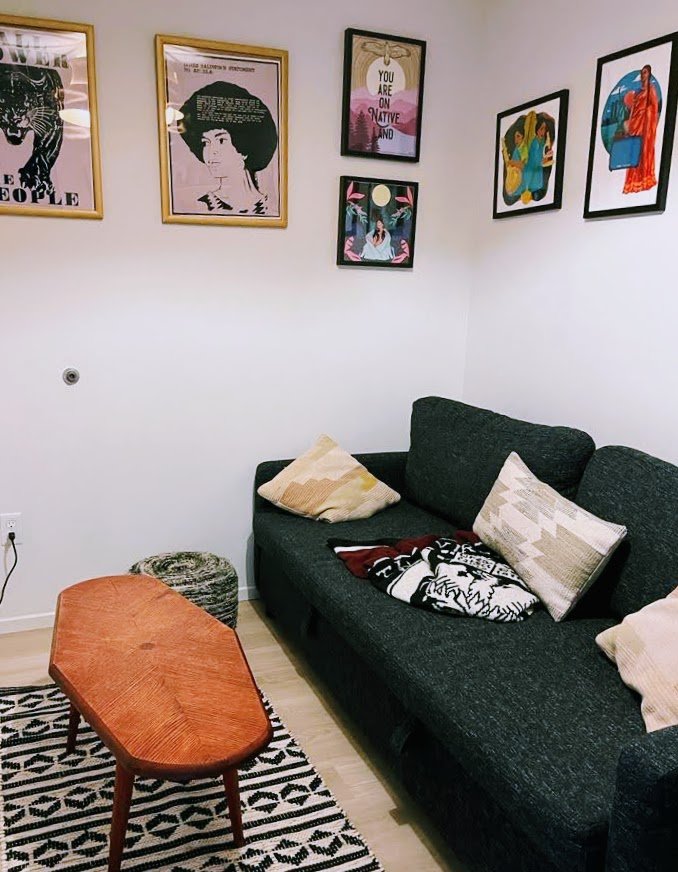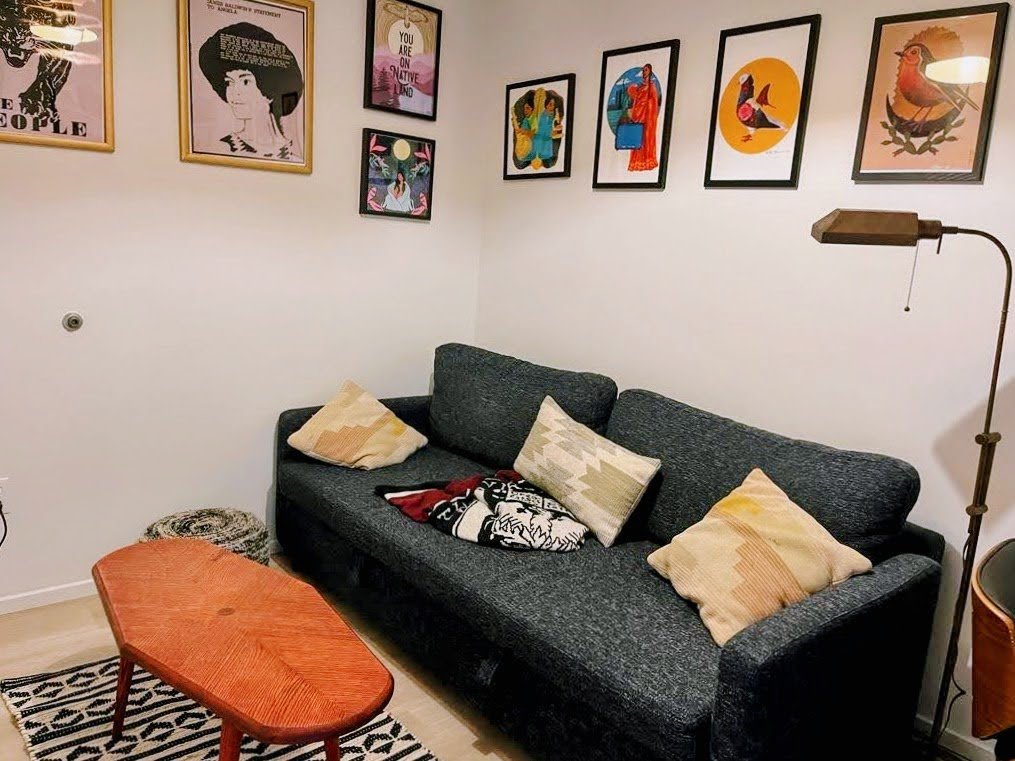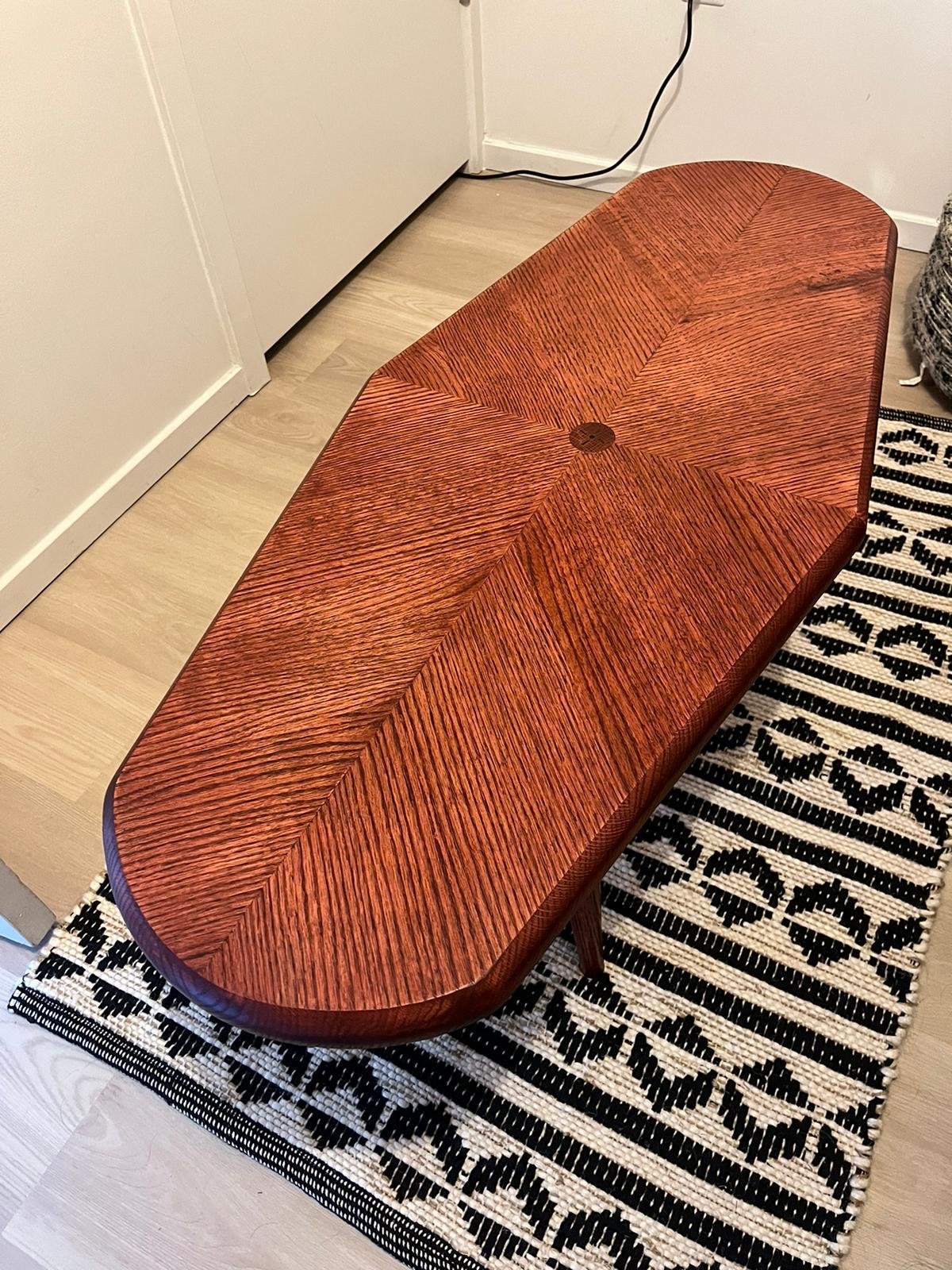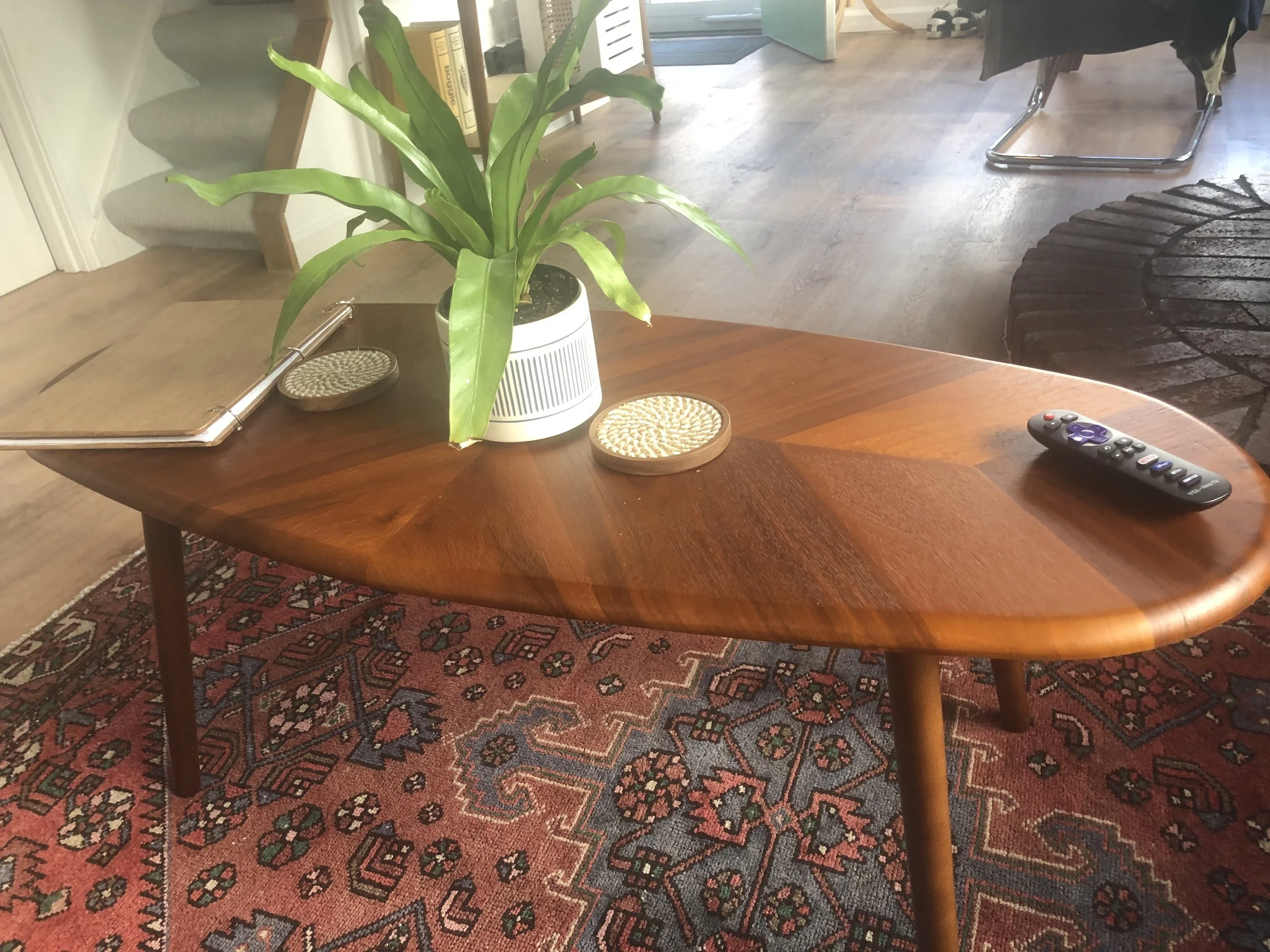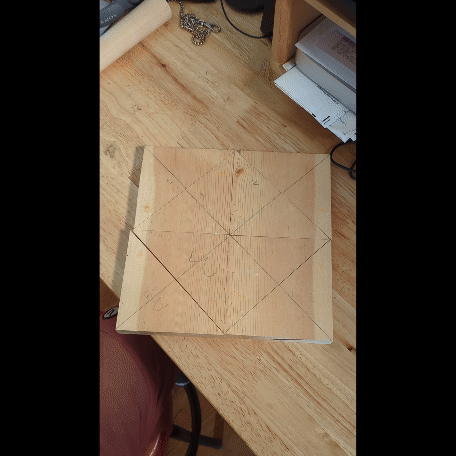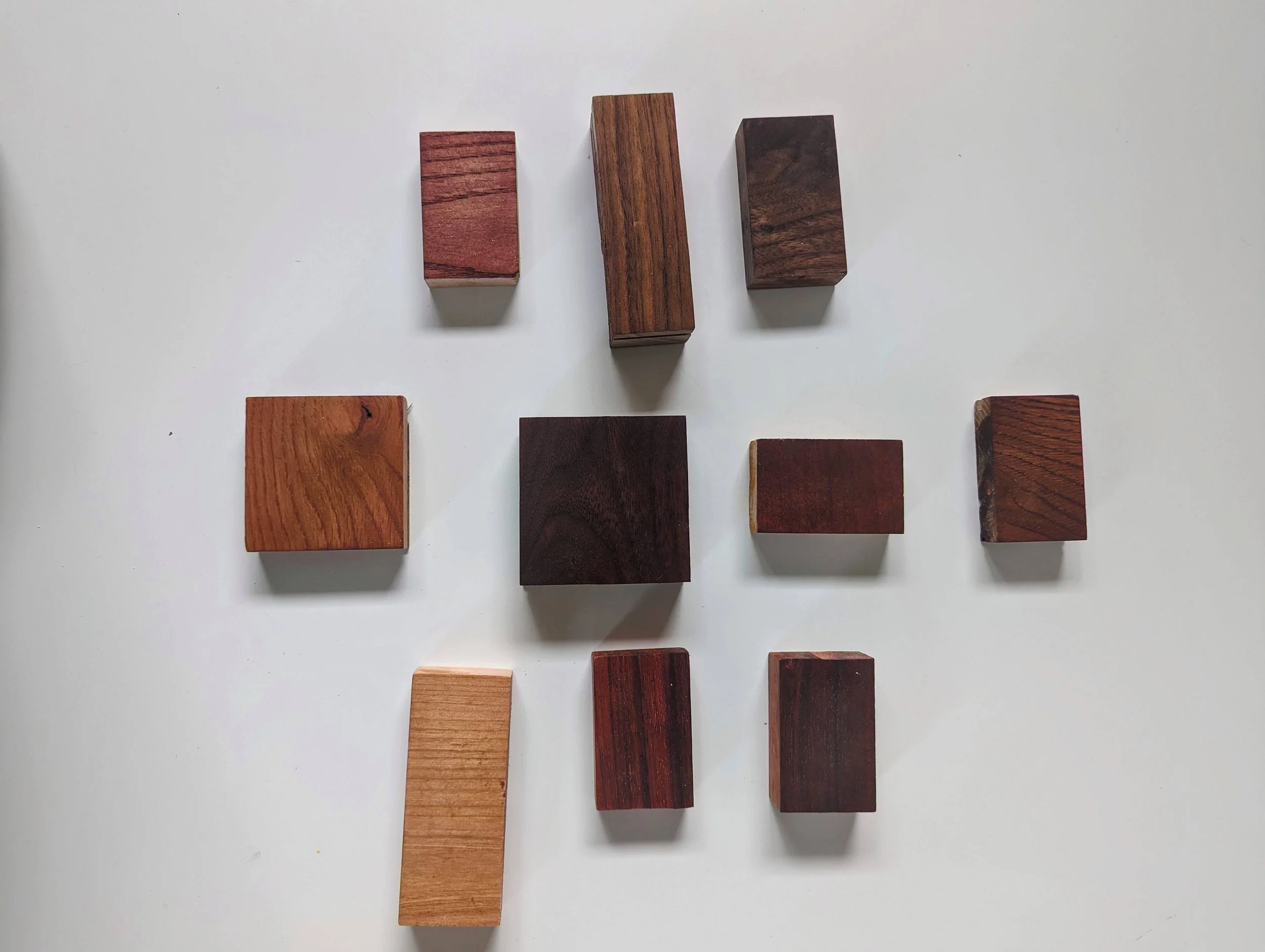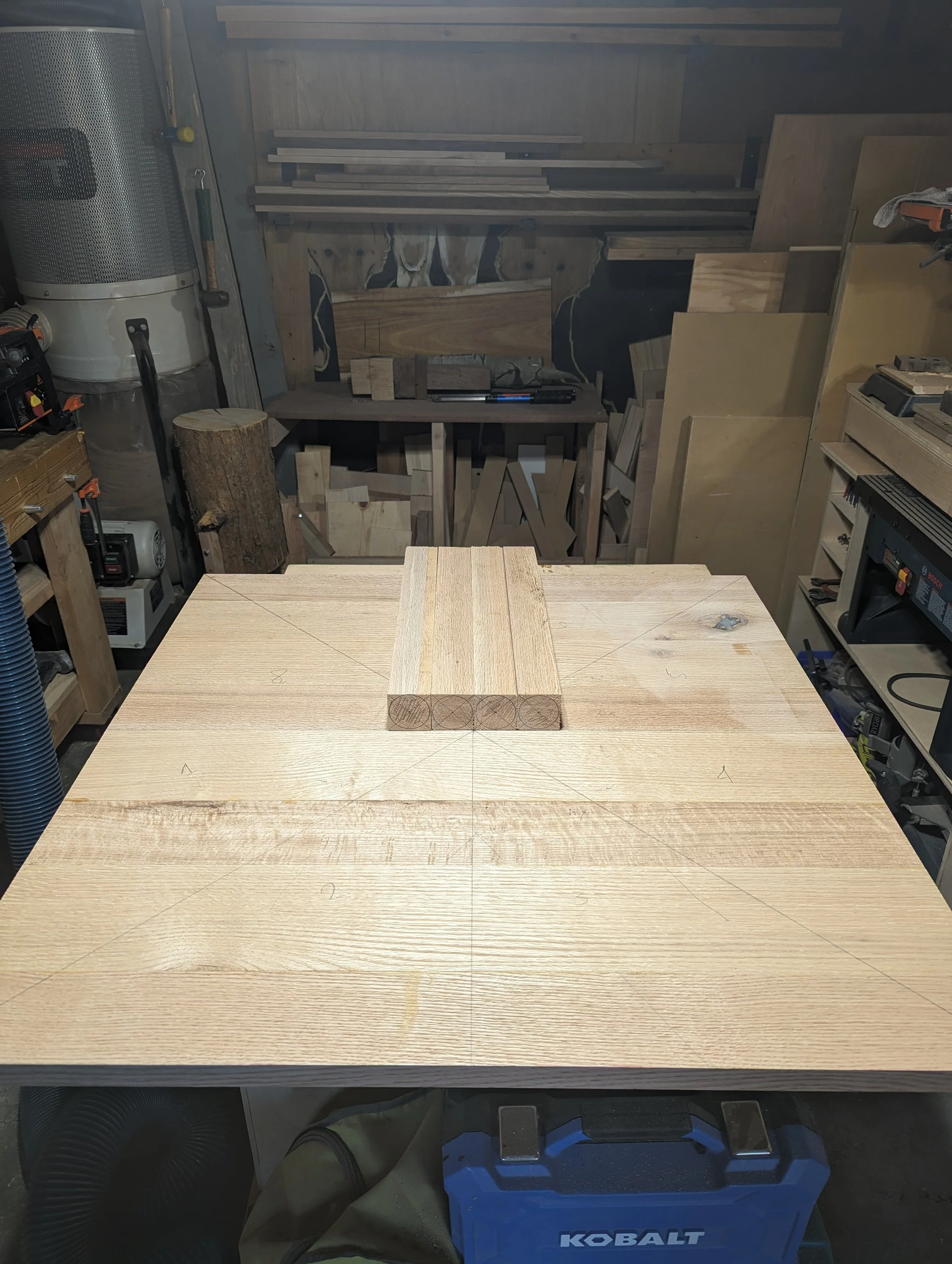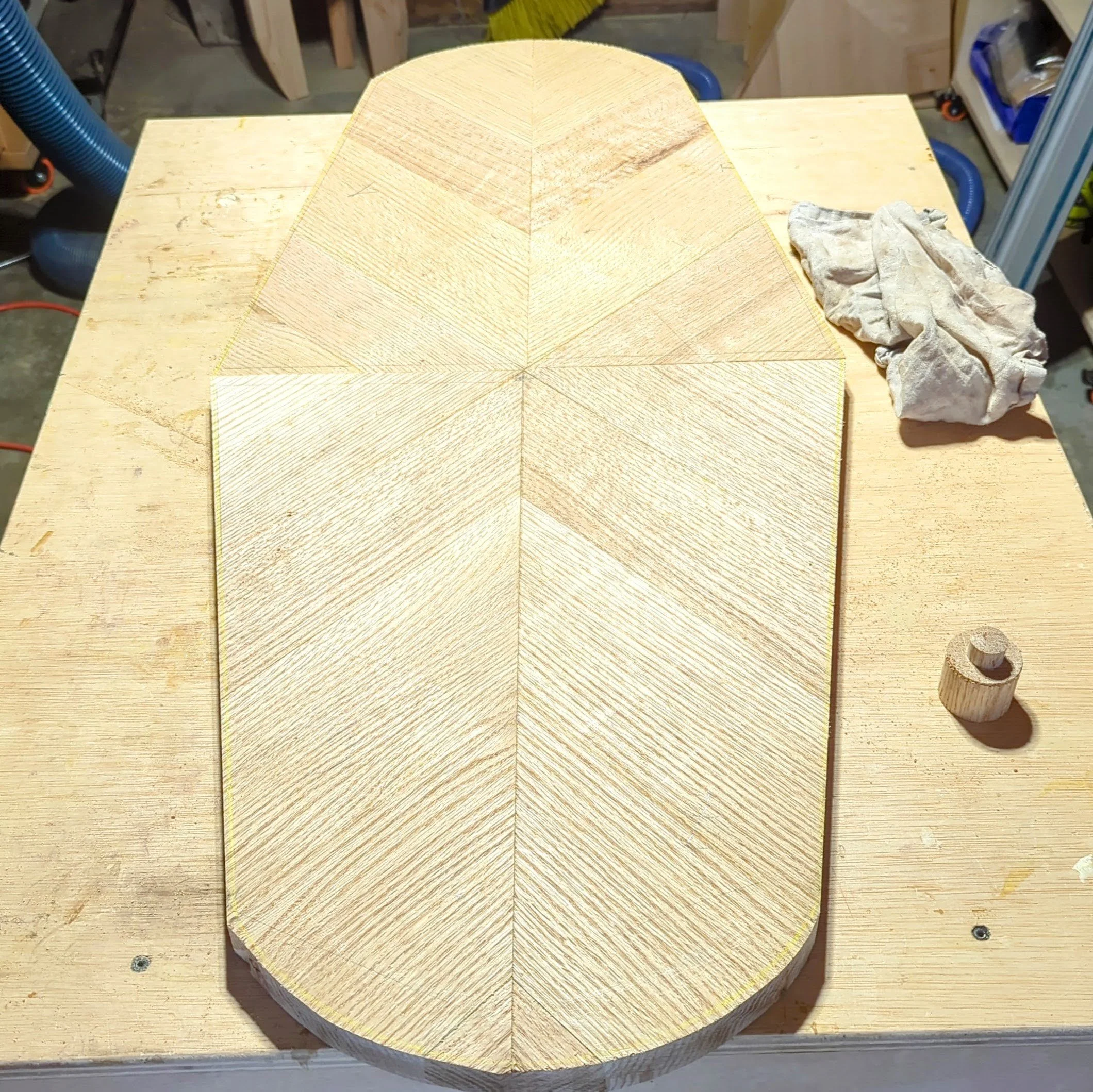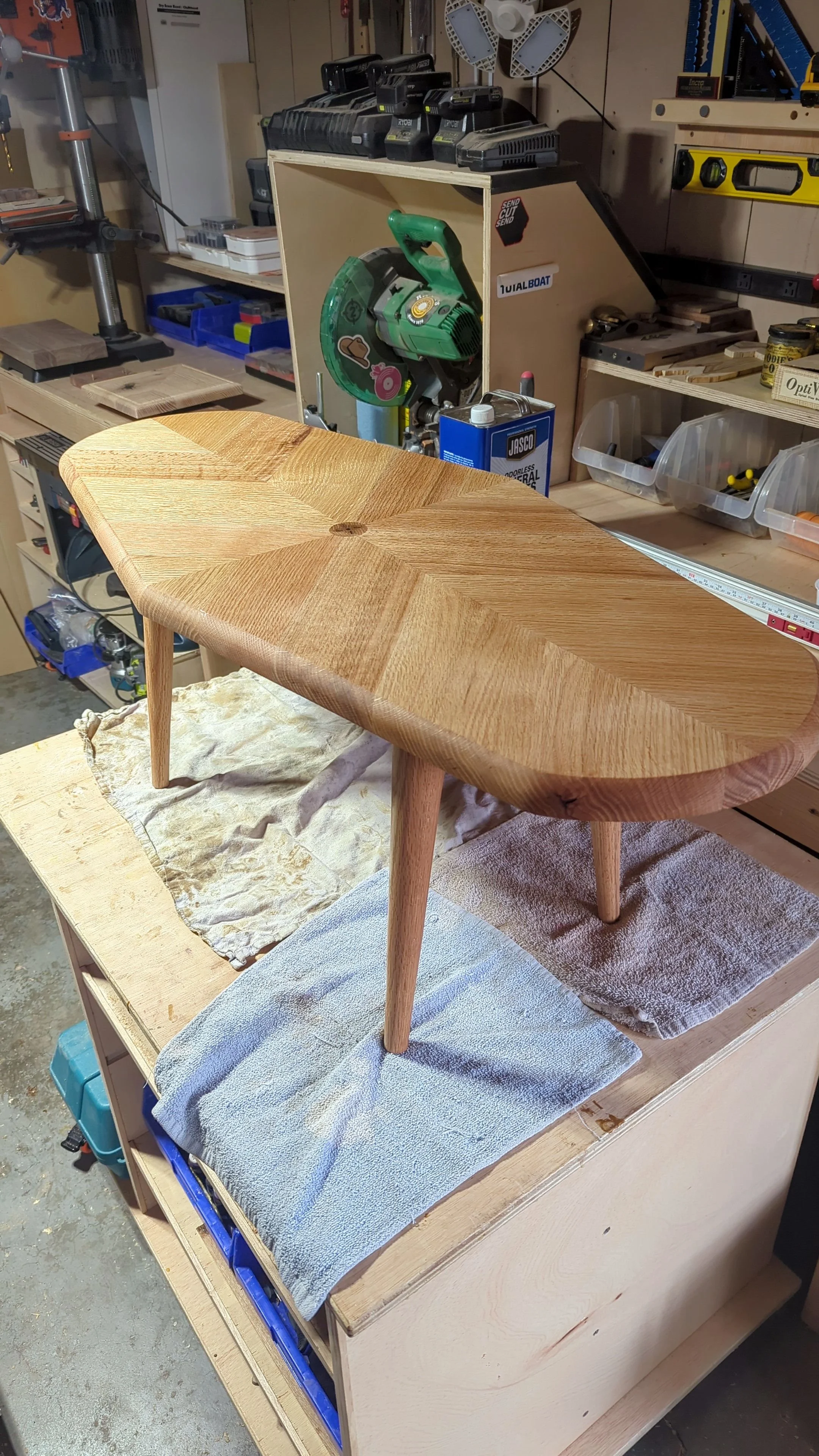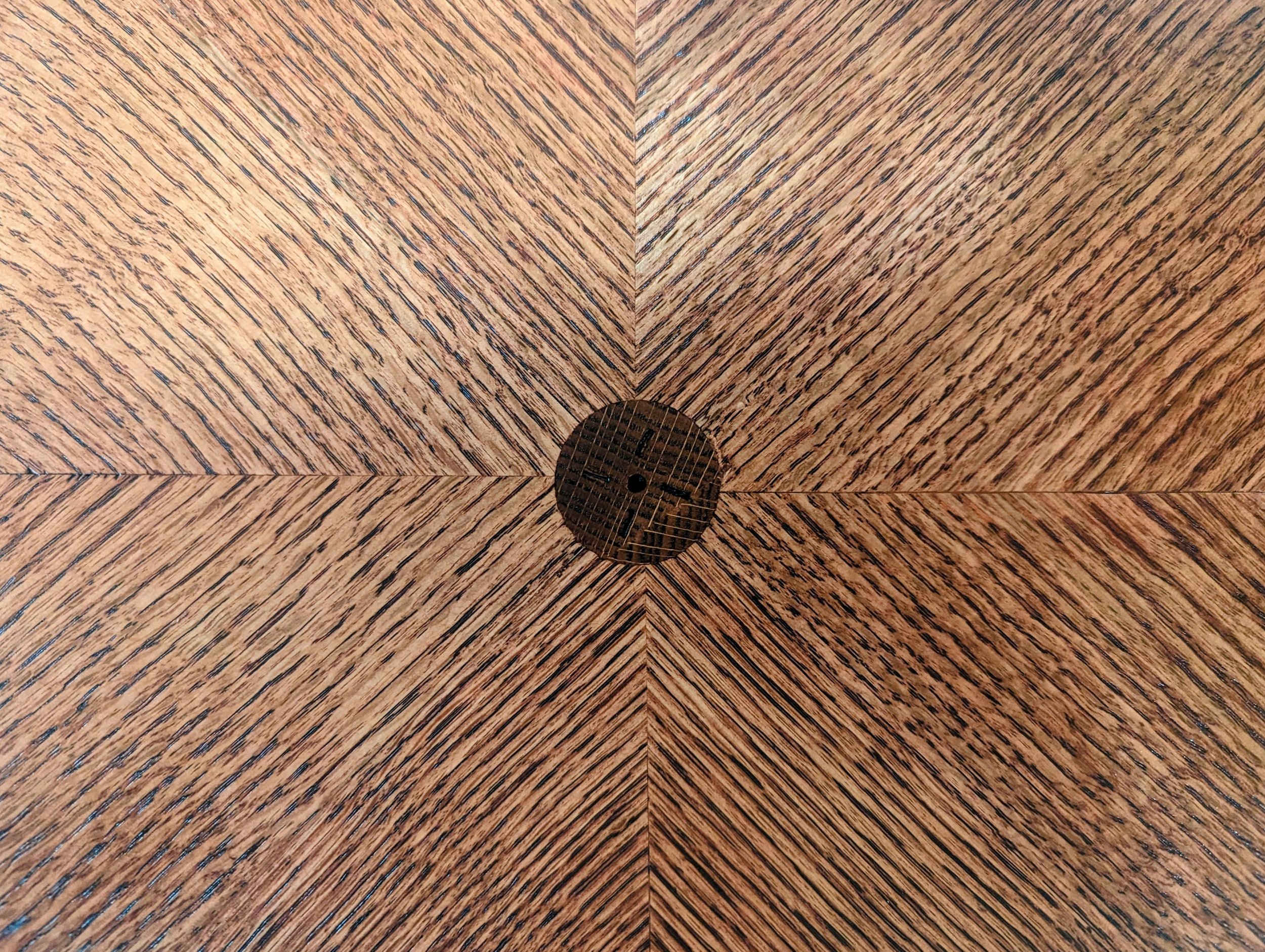
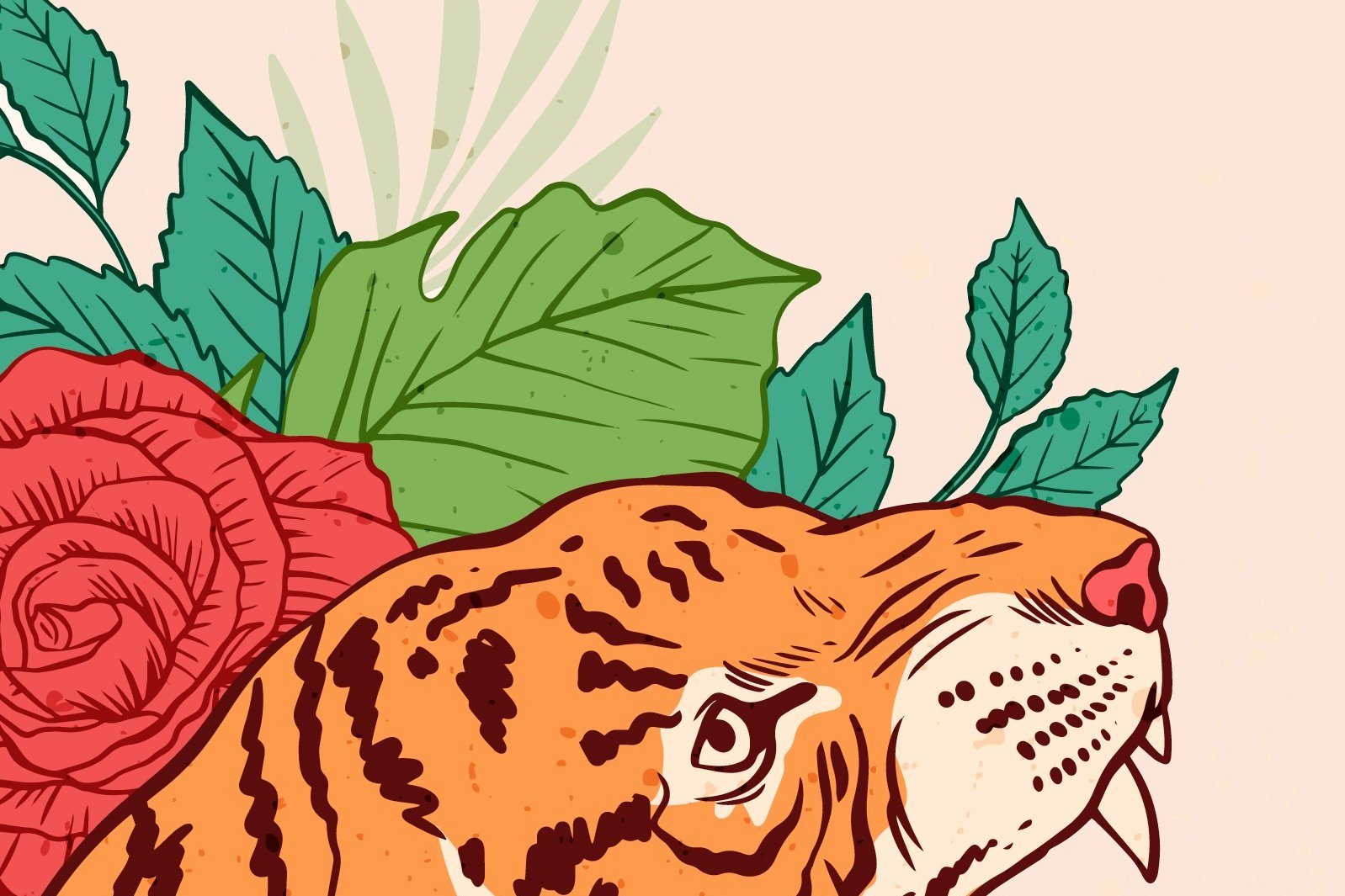
Chandani and Brady are not only incredibly lovely humans but they're also razor-sharp and cerebral. Plus, they're blessed with an unbelievably awesome kid. On one of their travels, they found themselves in a mid-century modern decorated Airbnb. There, a coffee table captivated their hearts. Recalling the contest I was running, they didn't waste a moment – they snapped a photo and sent it my way with a clear message: "We want this."
-"Hell yeah, I'm on it!"
As I dissected the design, I couldn't help but think, "This is fucking awesome." Two distinct elements stood out. The first was the chevron pattern, which united the table's shape with the wood grain. Then, there were those sleek, round, tapered legs. These two elements, with the diamond-rounded shape of the tabletop, made the table a fantastic, challenging project.
Building the prototype was fun and puzzly. I used a piece of pine to ensure I could accurately replicate the chevron pattern. First, I cut a square and divided it into rectangles. These rectangles were then split into triangles. I glued these triangles together to form squares, then combined them into rectangles, and finally assembled them into a large square from which I would shape the tabletop. With the prototype proving successful and after ensuring the measurements were just right, the design was all set to go.
From the photos they shared, the table's color ranged from red to brown. I always advise clients to take samples and place them in the intended space for the furniture. It's not just a conceptual exercise; physically seeing it in the environment provides clarity. Thus, I assembled a broad array of brown and red wood samples with pronounced grains and sent them over. Chandani and Aashna chose oak with a cherry stain.
Following their choice, I headed to the lumber store and selected the most beautiful rift-sawn red oak I could find. The rift-sawn cut ensures a stable tabletop and showcases some striking tiger grain, which will truly bring the chevron pattern to life.
Building this table was an absolute a fun, fun trip. The entire process felt like I never wanted it to end. Each stage revealed another captivating facet of the wood or the design. Given the unique shapes and the turning required for the legs, the experience resembled sculpting more than mere cutting. Interestingly, by the end of the process, I had five distinct parts: a tabletop and four legs. They appeared simple and direct, but arriving at this point required a labyrinth of steps. The journey meandered from simplicity to complexity, only to circle back to simplicity.

Red furniture can be just fucking class. Red tigers are my kind of tiger. But it's a fine line to tread. If the natural wood grain is obscured or if the stain is too thick that it detracts from the velvety texture of meticulously sanded/planed wood. As I stared at the chosen sample, I aimed to match its unique hue. Starting at the base, the initial stain felt too vibrant and intense in its redness. I recognized that the top needed a touch of warmth, introducing some yellow and brown undertones. The first coat was straight from the cherry stain sample they selected. But for the second layer, I mixed in a smidge of brown pigment to Odie’s Oil. Craving more depth and a subtle sheen, I finalized it with a blend of Odie’s Oil and Wax. The result was nothing short of spectacular. From someone who's often advocating against staining wood, I was now a believer. The rich, profound color added layers of sophistication to the table.
